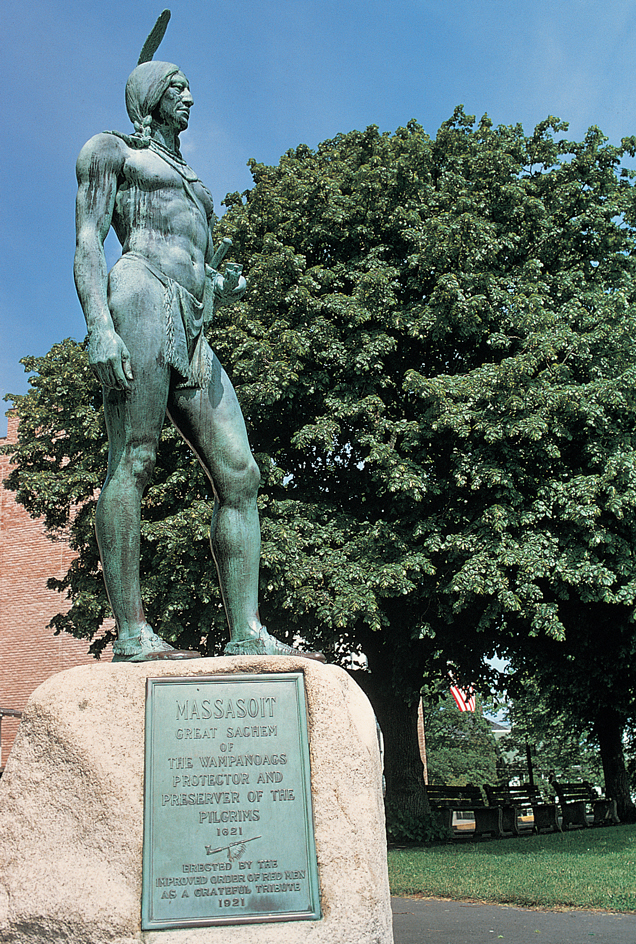Wampanoag, << `WAHM` puh NOH ag, >> are a Native American tribe that live in southeastern Massachusetts. In 1621, the Wampanoag and English settlers known as Pilgrims joined in the first Thanksgiving festival to give thanks for a good harvest and for peace. The Pilgrims had settled within the Wampanoag’s traditional homeland, which extended from what is now eastern Rhode Island to Cape Cod, Massachusetts.

The Wampanoag traditionally lived by farming, hunting, fishing, and gathering wild plant foods. They were loosely organized into groups headed by leaders called sachems. However, no single sachem held authority over all the Wampanoag. The Wampanoag originally spoke an Algonquian language that is now extinct.
Contact with Europeans beginning in the early 1600’s created terrible hardships for the Wampanoag. Smallpox, measles, and other European diseases killed many Wampanoag. Others were kidnapped and sold into slavery.
In 1620, English Pilgrims established Plymouth Colony along Cape Cod Bay. Massasoit, a Wampanoag sachem, made a treaty with the Pilgrims in 1621. He believed the Pilgrims would protect his people from the neighboring Narragansett, traditional enemies of the Wampanoag. Massasoit agreed that his people would not harm the Pilgrims as long as he lived. In return, the Pilgrims promised to protect the Wampanoag and respect their rights. But the friendly relations did not last.

When Massasoit died, his elder son, Wamsutta—whom the Europeans called Alexander—succeeded him as sachem. Massasoit’s younger son, Metacom, later succeeded Wamsutta. Europeans referred to Metacom as King Philip, believing he ruled over all the Wampanoag. Metacom grew concerned that as their demand for land increased, the settlers would eventually destroy his people. He began preparations to drive out all the Europeans in New England. The violent conflict, known as King Philip’s War, began in 1675. After several battles, the settlers defeated Metacom’s forces at Mount Hope—near present-day Bristol, Rhode Island—on Aug. 12, 1676. The settlers hunted down Metacom and killed him in a nearby swamp. They displayed his head on a stake in Plymouth for years as a warning to discourage further attacks by Native Americans.
Following the war, the Wampanoag lost most of their traditional lands to European settlers. Many Wampanoag adopted Christianity and other customs of the settlers. However, they never lost their sense of identity.
Today, about 2,700 Wampanoag live in the United States. They live mainly in southeastern Massachusetts, where they are organized into five bands: (1) Assonet, (2) Gay Head or Aquinnah, (3) Herring Pond, (4) Mashpee, and (5) Namasket. In the 1970’s, the Wampanoag formed a tribal council to represent the interests of the tribe. The council helped the Gay Head band of the Wampanoag obtain federal recognition in 1987. The Mashpee band became federally recognized in 2007.
